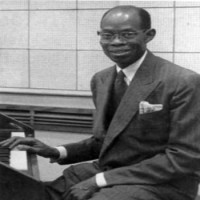Home
Blog
Composers
Musicians
Black History
Audio
About Us
Links
Composers:
Adams, H. Leslie
Akpabot, Samuel Ekpe
Alberga, Eleanor
Bonds, Margaret Allison
Brouwer, Leo
Burleigh, Henry Thacker
Coleridge-Taylor, Samuel
Cunningham, Arthur
Dawson, William Levi
Dede, Edmund
Dett, R. Nathaniel
Elie, Justin
Ellington, Edward K. "Duke"
Euba, Akin
Garcia, José Mauricio Nunes
Hailstork, Adolphus C.
Holland, Justin
Jeanty, Occide
Johnson, James Price
Joplin, Scott
Kay, Ulysses Simpson
Khumalo, Mzilikazi
Lambert, Charles Lucien, Sr.
Lambert, Lucien-Leon G., Jr.
Lamothe, Ludovic
Leon, Tania
Moerane, Michael Mosoeu
Perkinson, Coleridge-Taylor
Pradel, Alain Pierre
Price, Florence Beatrice Smith
Racine, Julio
Roldan, Amadeo
Saint-Georges, Le Chevalier de
Sancho, Ignatius
Smith, Hale
Smith, Irene Britton
Sowande, Fela
Still, William Grant
Walker, George Theophilus
White, José Silvestre
Williams. Julius Penson
AfriClassical Blog
Companion to AfriClassical.com
Guest Book
William J. Zick, Webmaster,
wzick@ameritech.net
©
Copyright 2006-2022
William J. Zick
All rights reserved for all content of AfriClassical.com
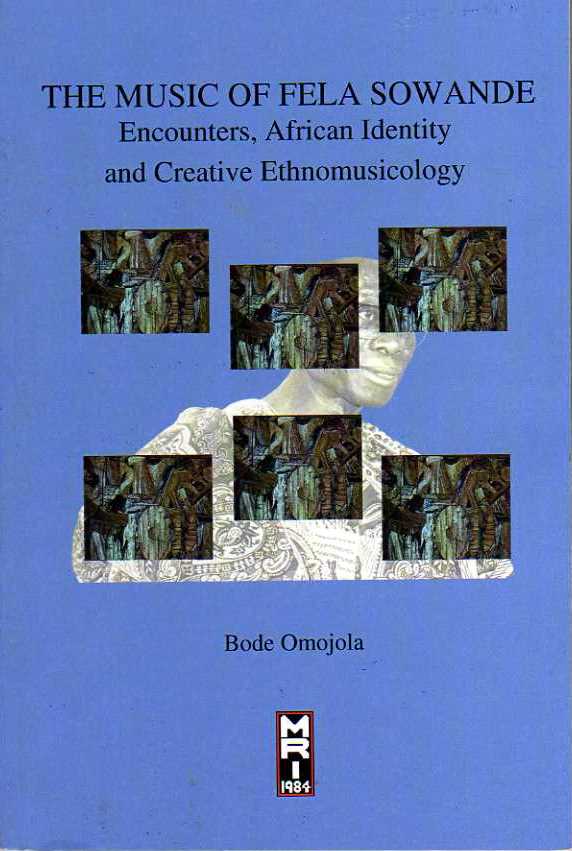
The
Music of Fela Sowande:
Encounters, African Identity and
Creative Ethnomusicology
Bode Omojola
MRI Press (2009)
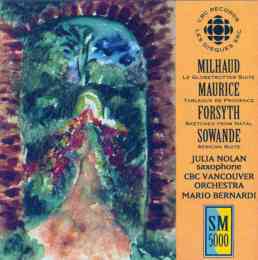
African Suite (24:52)
CBC Vancouver Orchestra
Mario Bernardi, Conductor
CBC Records SMCD 5135 (1994)
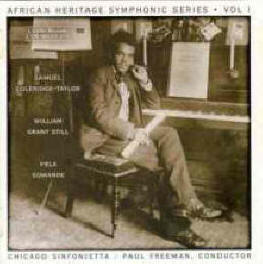
African Suite (Selections) (10:02)Chicago Sinfonietta
Paul Freeman, Conductor
Cedille 90000 055 (2000)

Singer Adelaide Hall and
Fela Sowande on cover of ASV LP Record Label
(From Alan Ashton) |
Home ->
Composers -> Sowande, Fela
Français
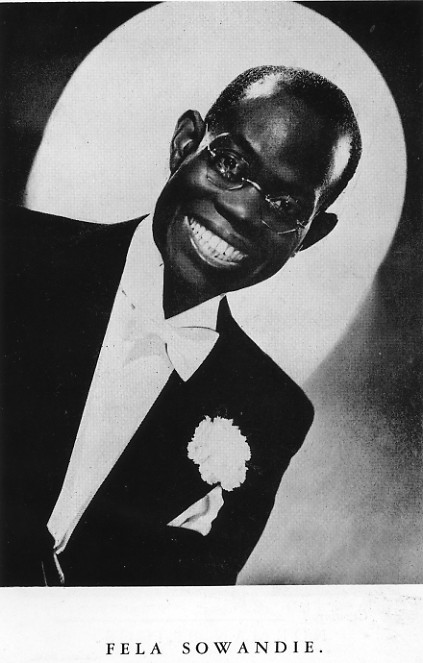
Alan Ashton
provides this photo, captioned "Fela Sowandie," from the "1946
Theatre Organ World publication"
Audio Samples
1 Cedille
90000 055 (2000); African Heritage Symphonic series, Vol. 1;
Chicago Sinfonietta; Paul Freeman, Conductor; African Suite
Joyful Day
2 Decca LM 4547 (1952); Fela Sowande African Suite for
String; Fela Sowande on electric organs; The New Symphony Strings; Trevor Harvey, Conductor;
Digitally Remastered, Mike S. Wright;
Akinla
3 Decca LP; Fela Sowande on electric organ with
male vocal accompanist (3:09)
Sierra Sue
4 Decca LP; Fela Sowande on electric organ with piano
accompaniment (3:12)
Goodnight
5
Decca LP; Fela
Sowande on electric organ; Parts 1 & 2, (5:41)
Deep Purple
1 Birth
The African composer Olufela Sowande was born in Oyo, Nigeria on
May 29,
1905. In the book Nigerian Art Music (1995) Bode Omojola, Ph.D., observes:
|
Fela Sowande is undoubtedly the father of modern
Nigerian Art Music and perhaps the most distinguished and internationally known African composer. The most
significant pioneer-composer of works in the European
classical idiom, his works mark the beginning of an era of
modern Nigerian Art Music. |
Prof.
Omojola is also author of The Music of Fela Sowande:
Encounters, African Identity and Creative Ethnomusicology,
published in 2009 by MRI Press. In that biography he
writes:
|
Fela
Sowande (1905-1987) was a Nigerian composer, a highlife
musician, a jazz pianist, the first musician to
introduce the Hammond organ into jazz music in London in
the 1930s, and one of he pioneering ethnomusicologists
in Nigeria. |
2 Father
Fela's father was Emmanuel Sowande, an Anglican priest of Egba
descent who helped establish Nigerian church music in the early
20th century. The elder Sowande taught at St. Andrew's College,
a missionary institute in Nigeria which trained young people to
become teachers. Emmanuel Sowande was subsequently transferred
to Lagos, and young Fela accompanied him there. Fela's father
arranged for him to be a choir boy at Christ Church Cathedral.
Dominique-René de Lerma is Professor of Music at Lawrence
University Conservatory of Music, and a leading authority on
composers of African descent. He notes that Fela went from choir
boy to music student, beginning a "20-year association" with the
choir's Director, Thomas King Ekundayo Phillips. The professor
has posted an excerpt on Sowande from a manuscript on Black
composers at a Web site:
www.africanchorus.org/Artists/
Sowande.htm
3 Education in Nigeria
Sowande's education began at the Church Missionary Society
Grammar School and continued at Kings College. Throughout that
period, he studied organ with Phillips and faithfully attended
his teacher's organ recitals. De Lerma recounts that those
performances included:
|
...European music and particularly the organ works of
Bach, Handel, and Rheinberger, as well as Coleridge-Taylor's Hiawatha's wedding feast. On his graduation from
Kings College, he was an accomplished pianist and was
engaged as deputy organist under Phillips at the Cathedral.
Simultaneously, he taught in a mission school and worked
as a civil servant for three years. |
4 Church Musicians
In The Music of Fela Sowande, Bode Omojola
writes of the influence of the early Nigerian church musicians
on Sowande:
|
In
establishing the foundations of Fela Sowande's
musicianship it is necessary to note the importance of
the works of the pioneering Nigerian church musicians.
Sowande studied and worked with some of these musicians,
and later imitated their styles in his own compositions. |
5 T.K.E. Phillips
The Music of Fela Sowande remarks on the
lasting connection between Sowande and T.K.E. Phillips:
|
Throughout his lifetime, Sowande continued to cherish
his interaction with Phillips, and was always eager to
reminisce on the link between his own successful career
and the training he received from Phillips.
...
Phillips gave me my first introduction to European Music
(Southern, 1976). |
6 Yoruba Music
The author says
that in 1953, Phillips wrote a book called Yoruba Music:
|
The
book describes some of the features that Phillips
insisted must be adopted by composers. These
features include the use of the pentatonic scale,
melodic reflection of the contour of texts, avoidance of
cadential semitones and predominance of parallel
harmonies. Some of these features would later
influence Sowande's own style. |
7 Jazz in Nigeria
Short-wave radio broadcasts of the music of Duke Ellington
introduced Sowande to jazz in 1932. Radio programs from the
United States, France and Britain allowed him to hear recordings
of other jazz artists as well. De Lerma continues:
|
This led to his organization of the Triumph Dance
Club
Orchestra, in which he played piano. He was also a
member of the jazz band, The Chocolate Dandies, that
had
been organized about 1927 in Lagos. |
8 Move to London
Sowande went to London to study civil engineering, but he was
soon supporting himself as a jazz musician. He founded a jazz
septet, comprised principally of musicians from the Caribbean,
and decided to study music. Sowande attended the University of
London and the Trinity College of Music as an external
candidate, and also studied individually with George D.
Cuningham, George Oldroyd and Edmond Rubbra. De Lerma explains:
|
However he was influenced by these contacts, it was in
1935 that he began coping with nationalistic impulses,
which were articulated in his articles from 1965, the
development of a national tradition of music and
Language in African music.
|
9 African
Americans
Sowande took lessons in jazz piano, and began performing on both
the piano and the Hammond organ. A number of African Americans
who visited London became his friends. They included Paul
Robeson and Fats Waller. Sowande performed George Gershwin's
Rhapsody in Blue as part of the show Black
Birds of 1936. This
brought him into contact with J. Rosamond Johnson, who served as
choral conductor for the production and who introduced him to
the works of Robert Nathaniel Dett.
10 Adelaide Hall
Dominique-René de Lerma
writes of Sowande's work with the singer Adelaide Hall::
|
He joined
Adelaide Hall as her cabaret pianist and recorded with
her in the last years of the 1930s. |
A photo in the
left column
shows Adelaide Hall and
Fela Sowande on the cover of an ASV LP Record. It has been
provided by Alan Ashton, a former BBC Radio Manchester host who
interviewed Sowande after he began teaching in the U.S.
The above photo of Fela Sowande in white tie was also provided
by Alan Ashton.
11 BBC Theatre Organ
Alan Ashton writes of
Fela Sowande's performances and recordings on theatre pipe organ
and electronic organ:
|
He made a number of
broadcasts on the BBC theatre organ as a solo performer,
and is still heard as accompanist, on Hammond organ, to
Adelaide Hall. I also believe that he appeared in the
stage production of Black Birds. His signature tune
during those popular organ music days was Deep
Purple...for obvious reasons!
|
Alan Ashton has
also given us access to the above mp3 files of Fela Sowande's
organ performances and recordings of popular songs. Alan
Ashton writes:
|
I have just come across
the entry in the 1946 Theatre Organ World publication,
and if you would like it I can also copy you an
excellent photo from that book. |
The photo now
appears at the top of this column.
12 Theatre Organ World
The entry on Fela Sowande
in the 1946 Theatre Organ World provides a snapshot of his
career as it stood at the time:
|
SOWANDE,
FELA, F.R.C.O.
Son of an Anglican
minister, came to England in 1934 from Southern Nigeria
to study civil engineering and music. Joined Blackbirds
Production of 1935 and 1936 as solo pianist for
Gershwin's Rhapsody in Blue, a work later performed in
Glasgow during the war years with the London
Philharmonic Orchestra. Has been dance-pianist,
dance-band leader, variety artist. Featured a rhythmic
style on the Hammond organ at clubs and stage, recording
several discs for Decca, and accompanying Adelaide Hall
for stage, radio and recording sessions. Was a regular
broadcaster before the war, with the signature tune of
“Deep Purple.” Joined R.A.F. In 1941, recording several
entertainment discs of organ music for Forces overseas.
During war years took his Fellowship of the Royal
College of Organists, and the first part of the Mus.Bac.
of the University of London. Went on loan from the R.A.F.
As musical director to the Colonial Film Unit, branch of
the then Ministry of Information, where he still is. Now
also organist at Kingsway Hall, London (West London
Mission). Spot recently in “Lisbon Story.” Has had his
two chorale preludes for organ on Yoruba folk-melodies
published by Novello. |
13 Role Models
In The Music
of Fela Sowande,
Bode Omoja writes on p. 50 that two composers who
served as role models for Sowande in England were the American
expatriate Edmund Thornton Jenkins (1894-1926) and the
Afro-British composer Samuel Coleridge-Taylor (1875-1912).
He adds:
|
For a
budding African composer like Sowande, similar models
were also provided in the United States, where composers
like Harry Freeman (1870-1954), Will Marion Cook
(1869-1944), Clarence Cameron White (1880-1960),
Florence Price (1888-1953) and William Grant Still
(1895-1978) were beginning to attract the attention of
lovers of classical music. |
14 African Identity
Prof. Omojola says on
p. 58 of The Music of Fela Sowande:
|
Sowande's ambition as
a composer and as a performer was not merely to excel in
Western art music. His most important objective,
as his career progressed, was to project his African
identity in his compositions and performances. |
15 Nature of Sound
Chapter Three of The Music of Fela
Sowande is entitled "In His Own Words." It begins on
p. 87:
|
Fela
Sowande's music emanates from domains of thought
transcending the boundaries of Artistic creativity.
|
On p. 97 the author quotes Sowande on the nature
of sound:
|
We regard sound (to
be) evocative, or creative in its own right, and as
itself (Sowande, 1966: 29) |
16
World War II Years
In 1940, Sowande presented his own compositions as examples on a
radio program of the BBC Africa Service, West African Music and
the Possibilities of its Development. He then joined Britain's
Royal Air Force, but was relieved of duty so he could serve as
music director for the country's Colonial Film Unit. In that
capacity he composed music for films which were intended to be
seen by Africans. De Lerma adds:
|
Composed at this time was his personal "signature tune",
based on a sacred melody (Obangiji) composed by Rev.
Joshua Jesse Ransome-Kuti that served its needs and
those of the BBC's African programs from 1943 to the 1960s.
It was in 1943 that he earned the Fellowship diploma of the
Royal College of Organists, as well as the Limas Prize for
music theory, the Harding Prize for his organ playing, and
the Read Prize for the overall excellence of his
examinations, along with his B.M. degree from the
University of London. He was appointed organist and
choir director of the West London Mission of the Methodist
Church in 1945 (Kingsway Hall), which stimulated the
creation of new works for organ. His Sunday recitals
became very popular. |
17 African Suite
Omojola recounts that Sowande collected African melodies for use
in his activities for the BBC Africa Service, and says of them:
|
These were later to be developed into original
compositions, in particular, Six Sketches for Full Orchestra
and the African Suite, both of which were issued on Decca
Records in London in 1953.
|
The African Suite (24:52) was recorded on CD in 1994 on CBC
Records SMCD 5135. The CBC Vancouver Orchestra is led by Mario
Bernardi, Conductor. The liner notes outline the history and
composition of the work:
|
The African Suite, written in 1944, combines well-known
West African musics with European forces and methods.
For the opening movement, Joyful Day, Sowande uses a
melody written by Ghanaian composer Ephrain Amu, as he
does in the fourth movement, Onipe. In
Nostalgia, Sowande composes a traditional slow movement to
express his nostalgia for the homeland (in itself a rather
European idea). At the centre of the work is a restive Lullaby, based on a folk original.
The finale of the Suite, Akinla, traces a very singular
musical history. It began as a popular Highlife tune -
Highlife being a pungent, 20th-century style, combining colonial Western military and popular music with West
African elements and a history of its own. Sowande then
featured it as a cornerstone of his "argument" that West
African music could be heard on European terms: the
African Suite was originally broadcast by the BBC to the
British colonies in Africa.
|
18 Post War London
Sowande's tenure as organist and choirmaster at the West London
Mission of the Methodist Church extended from 1945 to 1952. Omojola says of these years:
|
It was during this period that he began active composition;
it is not surprising that many of his early works were written
for the organ. The church element which formed the basic
foundation of his musical career continued to be the axis
of his musical life. Organ works written during this period
included Oyigiyigi, Kyrie, Prayer, Obangiji, Gloria
and Ka
Mura. These, like virtually all Sowande's organ works, are
based
on Nigerian melodies.
|
19 Homecoming
Sowande moved back to Nigeria in 1953 to become Head of Music
and Music Research of the Nigerian Broadcasting Corporation.
Prof.De Lerma explains his duties:
|
In this post he produced weekly radio programs based on
field research of Yoruba folklore, mythology, and oral
history, presented by tribal priests. |
20 Out of Zion
The Music
of Fela Sowande relates the composer's role in composing
music for the Nigerian Broadcasting Service (NBS) to celebrate
the coronation of Queen Elizabeth II in 1953:
|
On his
return to Nigeria, Fela Sowande was commissioned by the
Director General of the NBS, Mr. Tom Chalmers, to write
a work for the Lagos Musical Society to perform for the
coronation of Queen Elizabeth II. He wrote the
anthem Out of Zion, which was performed by the
society, with Fela Sowande accompanying. |
21 British Television
Even after his return to Nigeria, Sowande played a part in
British television. Clare Ethel Deniz was a Black British jazz
pianist. Her obituary in Britain's newspaper The Guardian, on
January 3, 2003, recalled:
|
She sang in Fela Sowande's choir for the 1954 television
series Club Ebony... |
Between 1955 and 1958, Sowande composed four songs based on
African American gospel music: Roll de Ol' Chariot, My Way's
Cloudy, De Ol' Ark's a-Moverin, and De Angels are Watchin'. De Lerma notes that a grant from the United States Government
enabled Sowande to travel to the U.S. in 1957 and give organ
recitals in Boston, Chicago and New York. While in the country
he also lectured on the findings of his research.
22 Instrumental
Idiom
In Chapter Two of The Music of
Fela Sowande, Prof. Omojola explains how Fela Sowande's use
of the Western orchestra led to a major change in the
perspective of younger Nigerian composers:
|
The
experimental use of the Western orchestra by Sowande to
imitate African musical procedures, marked a radical
departure from the sacred vocal compositions of earlier
composers like Phillips and Rev. J.J. Kuti. It is
an experimental procedure that opened the worldview of
younger generations beyond the confines of sacred vocal
music to the almost infinite possibilities that an
instrumental medium offered. Younger Nigerian composers
were excited by these new horizons, and they quickly
invaded the instrumental idiom in an invigorated manner.
For example Sam Akpabot wrote, among others, Scenes
from Nigeria (Wind Orchestra, 1962) while Euba wrote
Oluroumbi (Symphony Orchestra, 1967); Ekwueme
wrote Rhapsody for Strings, while Uzoigwe wrote
Fanfare (wind orchestra, 1983). |
23 Folk Symphony
The composer's Nigerian Folk Symphony was his last major work.
Prof. Omojola writes on p. 36 in The Music of Fela Sowande:
|
In 1960 he composed,
on commission, his Folk Symphony for symphony
orchestra. The symphony, the most important
orchestral work by a West African composer, was
premiered in 1960; but the dilemma that would engage
Sowande for the rest of his career began to manifest
with the composing of his particular work.
Commissioned and written specifically for Nigeria's
independence celebrations, the work was one of the
creative works especially devoted to that anniversary to
showcase the various talents and potentials of the
country. |
Choral and
dramatic works were also commissioned for the occasion.
|
While
all these other creative works were performed and
produced in Nigeria, Sowande's symphony simply could not
be performed by Nigerians because there was no symphony
orchestra in the country. |
24 Symphony Premiere
Prof. Omojola writes
that the Folk Symphony was given its premiere in 1960, as
planned, but not in Nigeria:
|
In its
charm and sophistication, though, the work attracted the
interest of Sir Charles Groves who conducted the
Bournemouth Orchestra in the premier of the work on 27th
October, 1960 in England. A newspaper report of
that concert (Wright 1960) presents a report of the
enthusiastic reception given to Sowande's symphony by
the Bournemouth audience:
Not often nowadays does an audience which has just heard
the first concert performance of a new symphony disperse
humming tunes from it, as did last night's Winter
Gardens audience; not often is such a work received with
cheers as was a Folk Symphony by the Nigerian composer
Fela Sowande after the Bournemouth Symphony Orchestra
had played it. This remarkable reception stamped Mr.
Sowande at once as having a capacity to
communicate directly to his audience, which few modern
composers possess.
...
The composer has a genuine gift for melody, is an
inventive orchestrator and gives his writing a tang of
originality by his use of spicy, rhythms of his native
land. |
25 Nigerian Sources
Prof. De Lerma comments on the response to the symphony in the liner
notes for three movements of the African Suite on Cedille 90000
055 (2000):
|
When Sowande conducted the New York Philharmonic in
his Nigerian Folk Symphony in 1964, a critic lamented
that it sounded more European than Nigerian. What he
missed was that, although the orchestral sonority was
certainly not rooted in Africa, the rhythms, scales, and
melodies were idealizations of Nigerian sources.
Sowande thus joined the other nationalists, following the
same process traveled by William Grant Still. |
26 Nationalism
Sowande composed most of his works during a time of rising
nationalism, with one African country after another achieving
its independence from a colonial power. He consciously employed
both Nigerian elements and European forms, and Omojola writes he
remained open-minded:
|
He believed in the philosophy of cultural reciprocity and
argued against what he called 'apartheid in art'.
According to him: 'We are not prepared to submit to the
doctrine of apartheid in art by which a musician is
expected to work only within the limits of his traditional
forms of music.' He therefore warned against:
'uncontrolled nationalism in which case nationals of any
one country may forget that they are all members of one
human family with other nationals.'
|
27 Output
On p. 117 of The Music of Fela
Sowande, the author considers the number and types of
the composer's works:
|
His
known compositions number over one hundred, consisting
of a variety of instrumental and vocal works. The list
covers small-, medium- and large-scale works, including
a tone poem and a symphony. Although many works
were published in the fifties and sixties, a good number
were never published. |
We read further
on p. 124:
| His
compositions can be grouped under the categories of
keyboard works, orchestral works, African-American
choral works, solo art songs, and choral works. |
|
28 Orchestral Works
Prof. Omojola writes
about "Orchestral Works"
on p. 128:
|
Sowande also wrote
eighteen works for the Western orchestra. Like his
organ works, many of these works are based on African
themes. Most were written in England, as pieces
commissioned by the BBC. For example, his Six
Sketches (for full orchestra) and the African
Suite (for strings orchestra) were originally
conceived as illustrative compositions, written under
commission by the BBC under its Overseas Program titled
"West African Music and the Possibilities of its
Development." |
29 Africana
The author tells us Africana
was Sowande's first orchestral work to be performed:
|
As I
explained in chapter two, the very first performance of
his orchestral work took place in London in 1944, when
the BBC Orchestra performed the tone poem Africana
under the baton of Sowande himself. Other
works in this category include Snow-Capped
Kilimanjoro (full orchestra), Six African
Melodies for Western Instruments (small ensemble),
Valse Galante (full orchestra, Koronga (full
orchestra) and An Evening Procession (full
orchestra). |
30 Organ Works
Prof. Omojola stresses
the significance of Sowande's works for organ:
|
Sowande's organ works occupy an important historical
place within the tradition of modern Nigerian music.
As one of the most important and earliest Nigerian
composers of art music in the European classical idiom,
his organ works (written in the 1940s and early 1950)
were some of the earliest examples of the tradition. |
31 Professor
After 1960, Sowande worked mainly as a professor. During the
1961-62 academic year he was a Visiting Scholar in the
Anthropology Department of Northwestern University in the U.S. He also worked with Roger Sessions at Princeton University. De Lerma writes that his next position was in Nigeria:
|
From 1962 until 1965 he was senior research fellow at
the
University of Ibadan, then becoming musicology
professor
at the university's Institute of African Studies. A
government grant in 1966 resulted in a series of studies on
Nigerian music. |
Sowande also studied Yoruba religion from 1962-65 with the aid
of a grant from the Ford Foundation. In 1968 he returned to the
U.S. to accept a position on the faculty of Howard University in
Washington. D.C. He held it until 1972. Between 1968 and 1972, Sowande made at least 48 recordings on the history, language,
literature and music of Nigeria, for distribution by the
Broadcasting Foundation of America.
32 Retirement
Dominique-René de Lerma
says Sowande's final two academic positions were on the
faculties of the University of Pittsburgh and Kent State
University in Ohio:
|
He became professor of Black studies at the University of
Pittsburgh in 1972, later joining the faculty of the School of
Education. He was affectionately known here as 'Papa
Sowande'.
His last position was in the Department of Pan-African
Studies at Kent State University, which he held until his retirement in 1982, accompanied by Eleanor, his wife.
|
33 Death
Fela Sowande spent his last days in a nursing home in Ravenna,
Ohio. He was 82 years old when he died of a stroke on
March 13, 1987. De Lerma describes the funeral service:
|
A memorial service was held at St. James Episcopal
Church in New York on 3 May 1987, at which time Eugene
Hancock complied with Sowande's 1965 request by
performing his Bury me eas' or wes'. Sowande had
received a permanent American visa in 1972 and had
become a citizen in 1977.
|
34 Honors
Throughout his career, Sowande accumulated an impressive array
of honors in recognition of his contributions to music. In 1943
he became a Fellow of Britain's Royal College of Organists. De Lerma writes:
|
Queen Elizabeth II named him a Member of the British
Empire in 1956, the same year he became a Member of the Federal Republic of Nigeria. The music department at theUniversity of Nigeria-Nsukka, was renamed the Sowande
School of Music in his honor (1962). In 1968 he was given
the Traditional Chieftancy Award, named the Bagbile of
Lagos. He was given an honorary doctorate by the
University of Ife in 1972. |
The Fela Sowande Memorial Lecture and Concert Series is an
ongoing tribute which has been held at the Institute of African
Studies of the University of Ibadan since 1996.
35 Centennial
The Fela Sowande Centennial Symposia and Festivals took place in
North America in 2004, and in Europe and Africa in
2005, to mark the centennial of the composer's birth.
This page was last updated
on
March 5, 2022
|





